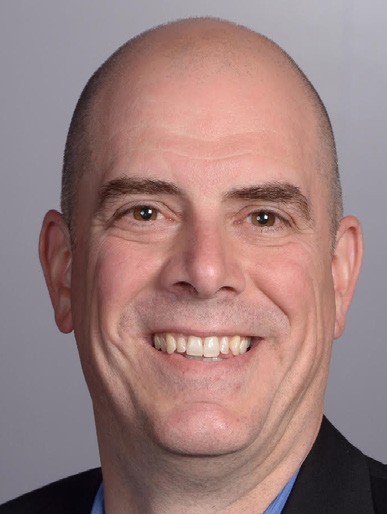Roundtable
People, Pipelines, and Projections: What Can Be Done To Help Emerging Therapeutics Get to Market Efficiently?
From tools and assays, to the need for improved collaboration, the potential answers to this question are numerous. IPT asked representatives from DeciBio, Cybin, and GORE PharmBIO for their opinions

Carl Schoellhammer at DeciBio:
Cell and gene therapies (CGTs) are set to revolutionise the treatment of a wide range of diseases. At the same time, this new class of therapies is in dire need of greater tools and assays to develop them, regulatory guidance on requirements for development, and new payor models to support their use in the market.
In each of these three areas, there are ways for biopharma to improve their development operations and get these drugs to market faster.
Development Tools and Assays
At the core of ushering a promising cell or gene therapy through to market is the fundamental need for better tools to develop these therapies in the first place. The current tools available are cobbled together from disparate development efforts in small molecules and biologics. One size does not fit all.
Tools
Cell transfection tools are the bread and butter of CGTs and have the fundamental task of getting genetic blueprints into a cell. Development efforts must evolve to make these tools more efficient and able to deliver larger payloads to cells with more complex genes.
Assays
An assay profile that can validate potency and performance early in the development process is a crucial yet oft-overlooked step that has both pipeline and regulatory implications capable of derailing a therapy. It is important to run more relevant assays that get to the true ‘performance’ of the drug and to align this performance with regulators early in the process.
For gene therapies, companies should prioritise relevant titer assays to determine the ‘potency’ of the viral gene therapy (AAV). Failure to do this can hamper go-to-market efforts, as was the case with Zolgensma (Avexis), where a huge scandal unfolded.
Unfortunately, there is currently no good standardisation of assays, which leads to FDA questions and slows down approval processes. In pushing cell therapies to market, it is prudent to move from phenotypic to functional assays to ask questions like, “Does the CAR T actually kill cancer, and over how long?”, rather than just asking “Does the T cell express the CAR?”
Companies like Sartorius (Incucyte) and Axion Biosystems have tools for real-time monitoring of a cell’s killing ability, for example, that can provide useful insights in this way.
Regulatory Guidance
The FDA has hired approximately 50 new reviewers, anticipates hundreds of applications per year from companies to start clinical trials, and expects to approve 10-20 new therapies per year by 2025, but guidance on what is needed in filing documents is lacking. This has led to companies being tripped up in their regulatory filings around chemistry manufacturing control (CMC) issues:
- BioMarin: Received a complete response letter (CRL) from the FDA on their Hemophilia A drug (Valrox), causing a multi-year delay. They recently submitted a biological license application (BLA) after some setbacks in the application
- Voyager: Had a hold on its investigational new drug (IND) for Huntington’s gene therapy related to CMC issues. Ultimately, Voyager scrapped its programme
- BlueBird: Had a hold placed for their cell therapy LentiGlobin for sickle cell. A BLA is still pending
Pricing
A big sticking point with new therapies is the cost. Across the pharma sector, there is a move towards performance-based pricing, in which a drug’s duration and efficacy dictate the pricing structure.
Drug companies need to begin these long-term trials as early as possible to ultimately support the pricing and market utility of their product once approved.
Otherwise, rollouts are stymied due to payor concerns, which can hold back the actual use of a drug if the data supporting the drug’s pricing and market utility isn’t in hand.

Image: freepik
Amir Inamdar at Cybin:
There are a few success factors for emerging therapeutics to get to market efficiently. The first factor is the R&D of compounds that are based on a sound biological rationale for the targeted indication.
Preclinical research, which includes in vitro and in vivo experiments that help characterise the pharmacology and safety of the compound, is the foundation of a molecule’s success before entering clinical trials.
Often, scientists will review already developed medicines to get an idea of how a particular chemical structure may have some activity.
While clinical studies are ongoing, it is important to raise awareness and acceptance along with promoting changes to treatment policies which must adapt to a novel treatment paradigm. The more positive research and public education that happens over the next few years, the faster the integration of emerging treatments.
With any emerging treatment, there is also the consideration of collaboration and sometimes consolidation. Intellectual property will be critical to the development of drug candidates and overall success in this sector.
Bill Barrett at GORE PharmBIO:
Traditional biologic manufacturing has long been the cornerstone of the biopharma industry, but a necessary and game-changing shift to smaller batch, more personalised therapies is taking centre stage.
With this shift comes the rise of emerging modalities such as bispecifics, trispecifics, antibody-drug conjugates (ADCs), bespoke CGTs, and cytokines, and the market is actively seeking innovations to optimise processing and control costs to efficiently bring these therapies to market.
One specific area where these innovations are needed is in downstream processing, which in some cases continues to remain a serious bottleneck and can contribute to hindered production.
Chromatography is a critical component in molecule separation and purification, and ensuring biotherapeutic production is safe. The potential for increased efficiency in chromatography solutions, and consequently for getting therapeutics to market efficiently, is high and can be realised through new types of matrices such as monoliths, membranes, or nanofibers. Some of these products are likely being thought of as single-use affinity chromatography products that eliminate packing, storage, and revalidation, and reduce the bioburden risk associated with longer-term resin storage.
These new technologies can also demonstrate shortened cycle times for high batch productivity and may be incorporated into emerging continuous bioprocessing systems to further improve efficiencies and propel emerging therapeutics’ time to market. They could be a game changer for new modalities.
Biopharma companies continue to strive to be as efficient as possible throughout all stages of drug development and manufacturing to ensure these emerging therapies are reaching patients who most need them.
With an eye towards embracing chromatography tools and technologies with step change performance, bottlenecks will be reduced and, as part of the overall manufacturing process, patients will have access to new therapeutics across many disease conditions.

Carl Schoellhammer, PhD, is an Associate Principal at DeciBio Consulting, a boutique life science consulting firm where he leads the next-generation therapeutics practice vertical.
He regularly advises Fortune 500 therapeutic and diagnostic companies and has supported investments and mergers and acquisitions in this space in excess of $1 billion. Concurrently he is a co-founder and board member of Suono Bio, a biotherapeutics company spun out of Professor Robert Langer’s laboratory at MIT. Carl holds a PhD from MIT, US, where he trained in Professor Robert Langer’s Lab. His work has been published in Science Translational Medicine and Gastroenterology, and has been featured by Forbes, Popular Science, CNET, and The Atlantic, among others. He is a previous recipient of the Lemelson-MIT National Collegiate Inventors Prize and the National Collegiate Inventors Competition top prize.

Dr Amir Inamdar MBBS, DNB (Psych), MFPM is a qualified psychiatrist and pharmaceutical physician with over 20 years of clinical and drug development experience.
He has successfully progressed numerous candidate drugs through preclinical development and early phase clinical trials to proof-of-concept studies. He is experienced in leading global teams overseeing development of novel medications across a range of psychiatric indications including treatment resistant depression, narcolepsy, anxiety, schizophrenia, bipolar disorder, and substance use disorders. He is currently Chief Medical Officer at Cybin.

William Barrett, PhD, is a Product Specialist developing affinity purification chromatography for W. L. Gore and Associates. His 20 years of industry experience in biotechnology, chromatography and medical devices includes prior work on affinity depletion devices, pathogen inactivation, and protein purification and characterisation for drug-device combinations.
He received a PhD in Biochemistry from the University of Illinois, US, and completed his fellowship in the Laboratory of Biochemistry at the National Heart, Lung and Blood Institute (NHLBI) at the National Institutes of Health (NIH).